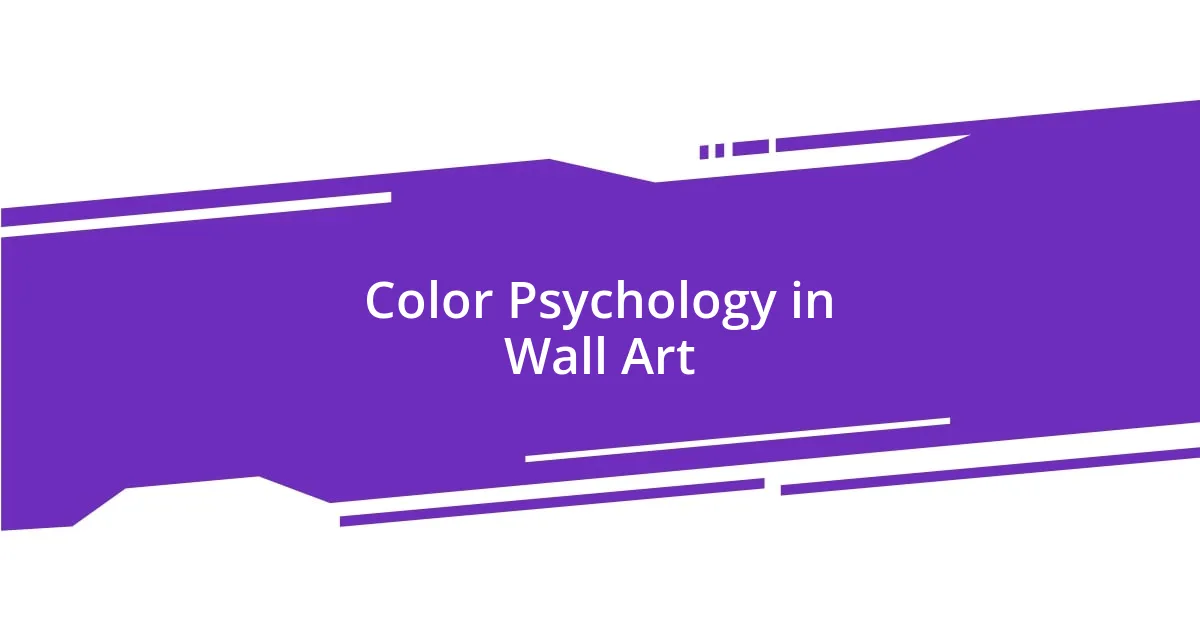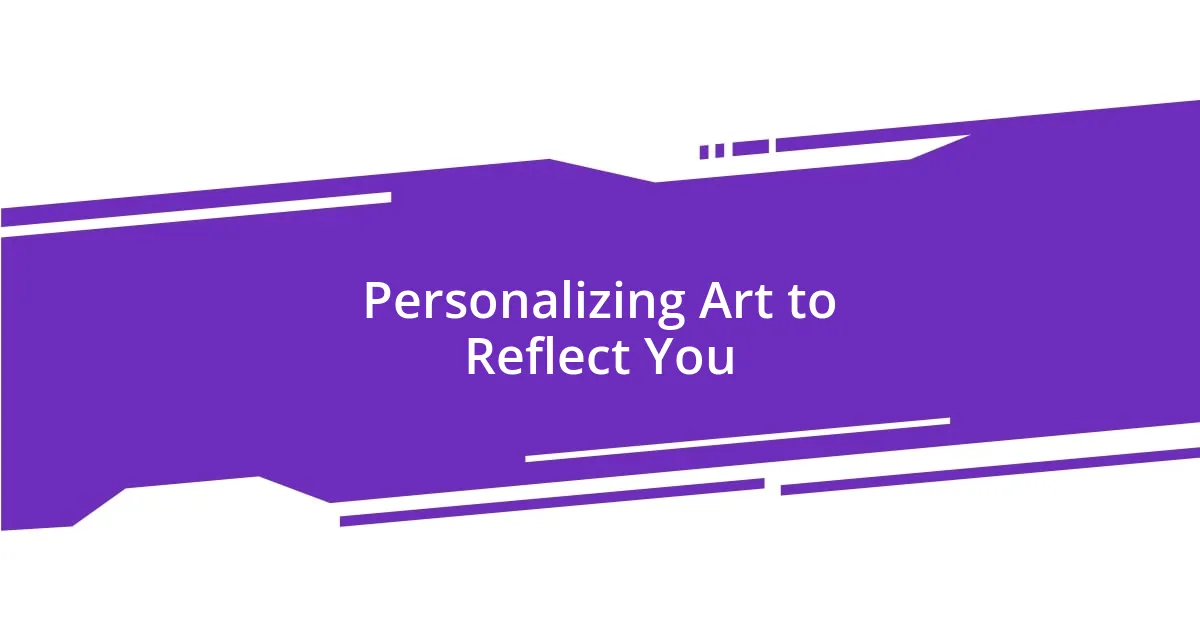Key takeaways:
- Color psychology influences emotions; soft blues/greens promote relaxation, while vibrant yellows/oranges can energize.
- Effective display techniques include creating gallery walls, hanging art at eye level, and using adjustable lighting to enhance the mood.
- Mixing art styles and maintaining a cohesive theme can create a harmonious atmosphere in a space.
- Personalizing art with pieces that reflect individual passions and memories enhances the emotional connection to one’s environment.

Color Psychology in Wall Art
Color psychology plays a significant role in how we perceive wall art and the moods it creates. Personally, I always feel more relaxed in a room adorned with soft blues or greens. They remind me of tranquil oceans and lush forests, which instantly reduce stress. Isn’t it fascinating how just a splash of color can transform our emotional state?
Take muted earth tones, for example. I often find that when I decorate my space with warm browns and deep reds, it generates feelings of coziness and comfort. It’s like wrapping myself in a warm blanket on a chilly evening. How do the colors in your home make you feel?
Vibrant colors, like yellows and oranges, exude energy and creativity. I’ve found that when I incorporate bold artwork with these shades, it sparks inspiration in my workspace. It’s intriguing to think how a piece of art can energize or soothe us, simply based on its colors. Wouldn’t you agree that choosing the right hue is key to setting the right mood?

Display Techniques for Maximum Impact
Using different display techniques can significantly enhance the impact of wall art in your space. One technique I love is grouping smaller pieces to create a gallery wall. It brings a vibrant energy to the room. In my living room, I’ve arranged a mix of framed photos and abstract pieces. This collection not only sparks conversation but also evokes various emotions depending on where you focus your gaze.
Another impactful method is height placement. I tend to hang larger pieces at eye level, drawing immediate attention and creating a focal point. When I positioned a bold abstract canvas this way in my dining area, it transformed the ambiance. Guests often comment on it, making it an integral part of our gatherings. Have you noticed how eye-level art can draw people into the emotions it portrays?
Lastly, lighting can enhance the mood of your artwork. I installed adjustable spotlights that highlight specific pieces, giving my space a dynamic feel. Whenever I dim the lights and focus on a painting, it creates an intimate atmosphere. The right lighting transforms not just the art but the entire experience in the room. Have you ever considered how much lighting influences your perception of art?
| Technique | Description |
|---|---|
| Gallery Walls | Group smaller pieces for a dynamic effect that invites conversation. |
| Height Placement | Hang pieces at eye level to create focal points that draw attention. |
| Lighting | Use adjustable lights to enhance and transform the mood of your art. |

Creating Cohesion with Art Styles
It’s remarkable how varying art styles can create a cohesive vibe in a space. I remember when I first mixed minimalist and rustic styles in my home office. The clean lines of minimalism paired beautifully with the organic textures of rustic art, fostering a peaceful yet inspired atmosphere. When everything feels interconnected, it’s almost like the art is speaking the same language, inviting you in to explore the harmony.
- Consider Theme and Subject Matter: I often pick artwork reflecting similar themes, like nature or abstract forms, to maintain an overarching narrative.
- Match Frames to Styles: I find that using consistent framing helps tie disparate artworks together. For instance, I’ve chosen sleek black frames for modern pieces and distressed wood for more traditional ones.
- Create a Color Palette: By following a cohesive color scheme across different art styles, I ensure that each piece complements one another, enhancing the overall look of the room while highlighting individual expressions.
Blending distinct art styles can be an exciting journey. One day, I was looking at a contemporary painting that seemed out of place amongst my vintage finds. However, placing it next to some antique décor unexpectedly created a delightful conversation between the past and the present. This happy accident made me realize how art can ignite connections that transcend time.

Personalizing Art to Reflect You
When I set out to personalize my art collection, the first step was to find pieces that truly resonate with me. I stumbled upon a vibrant landscape painting during a weekend market visit. It reminded me of family hiking trips, sparking joy every time I glance at it. I realized that art could evoke not just memories but also a sense of self, transforming my walls into extensions of my experiences.
Choosing art that reflects your passions is key. For instance, I adore music, so I incorporated framed vinyl covers and concert posters into my decor. This not only expresses my love for the genre but also sets a lively mood for gatherings. Have you ever thought about how your interests could be mirrored in the art you choose? It invites your guests to engage with your story, making them feel more connected to your space.
Color plays a pivotal role in how I personalize art. I remember hesitating to hang a bright, bold piece because it seemed too overwhelming. However, when I finally embraced it, the energy it brought was unexpected. It created an uplifting vibe that transformed my room. What about you? Have you found that the colors you choose in your art influence how you feel in your own space?














